
|
USE THE MENU ABOVE TO MOVE TO DIFFERENT SECTIONS. If necessary, use 'Ctrl + or -' to zoom your browser. WATER EDUCATION 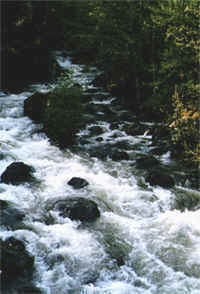 As water flows over gravel or stones in a river or creek, the volcanic processes by which stones were created cause them, over time, to align their electromagnetic energies in polarity with the North and South poles of the Earth. The water, in turn, structures itself according to Earth's electromagnetic field. The molecules re-align themselves and collect into large families, regenerating themselves. From this comes the extensive cleansing power of water. Profiles of Dead Water Healthy spring water loses its vitality when put into holding tanks or ponds, or by pumping it through pipes into our homes, schools and business offices. Stagnant or still water becomes a breeding ground for bacteria and microorganisms. Eradication of these pollutants by conventionally accepted methods of adding chemicals such as fluoride and chlorine create a new kind of poisoned water. The adverse health effects of fluoride, ( a toxic waste product from aluminum processing) and chlorine (may increase risk of cancer by 95% by drinking, inhalation or skin absorption) have been documented for years. 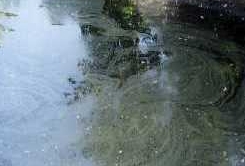 The unaware public continues to drink poisoned
water without anything effective being done about it. By drinking polluted
water over a period of years, we build a base for sickness or diminished
health. Many children born with conditions, such as asthma or allergies
or who have developed ADD, are linked to poor quality municipal drinking
water. Homeowners, service repair shops, doctors, beauticians all create
sick or dead water by using contaminants such as pesticides or fungicides,
detergents, binders, solvents, pharmaceuticals or petroleum products
that leach into ground water.
The unaware public continues to drink poisoned
water without anything effective being done about it. By drinking polluted
water over a period of years, we build a base for sickness or diminished
health. Many children born with conditions, such as asthma or allergies
or who have developed ADD, are linked to poor quality municipal drinking
water. Homeowners, service repair shops, doctors, beauticians all create
sick or dead water by using contaminants such as pesticides or fungicides,
detergents, binders, solvents, pharmaceuticals or petroleum products
that leach into ground water.
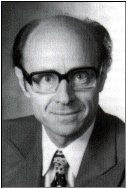
Contaminated water, such as we find in city water and in some well water, can be purified chemically, but it still possesses electromagnetic oscillations in certain wave lengths that can be traced to the contaminants that were found in it, such as, pesticides, heavy metals, or bacteria. Even after filtration and chemical purification, it will still retain the electromagnetic frequency of whatever passed through it previously! The "Vortexing" Influence 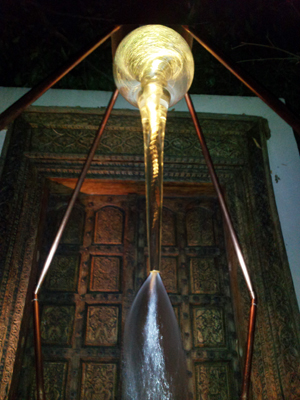 "Vortexian energies are the Keys to Life", for they are mirrored inside every living being on the planet. Once we realize this, the whole notion of "mystery" simply falls away. Walk through a forest, see a stream and look at your reflections in the stream, every part of that experience on all levels, both visible and invisible, physical and spiritual is connected, for all of these are vortexian energy (a complexity of hyperdimensional physics). It is not a question of harnessing this energy, but of releasing it from its confines and working with it in harmony. Vortexian energy, particularly in the case of water, derives from sympathetic harmonies and the avoidance of disharmony, as in the flow of energy patterns that are created by water as it becomes cleansed by moving through the bowels of the earth. 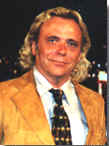
The "Magnetic" Influence The process of exposing water to magnetic fields to revitalize and purify, is not new. Ancient Romans were among the first to utilize the earth's magnetic properties with their aqua ducts built to purify and revitalize water. 
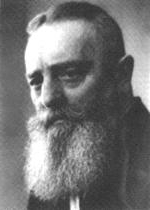 More recent innovators
of magnetic therapies and uses, including Johann Grander, a student of
Viktor Schauberger,
Professor Lin of the Israel Institute of Technology and
Walter Rawls, Jr.
PhD.of Bio-Magnetics Systems have confirmed the health benefits of many
treatments. The addition of beneficial frequencies to change the molecular
structure of water leaves it with more vitality. The magnetic effect serves
to reduce the surface tension of the water by breaking ionically neutral
calcium carbonate clumps into magnetically charged ions of calcium and
carbonate. This helps free the water surface of precipitate, making it
less dense (wetter). In addition, it places the dissolved minerals in
a state that prevents precipitation to form as hard scale.
More recent innovators
of magnetic therapies and uses, including Johann Grander, a student of
Viktor Schauberger,
Professor Lin of the Israel Institute of Technology and
Walter Rawls, Jr.
PhD.of Bio-Magnetics Systems have confirmed the health benefits of many
treatments. The addition of beneficial frequencies to change the molecular
structure of water leaves it with more vitality. The magnetic effect serves
to reduce the surface tension of the water by breaking ionically neutral
calcium carbonate clumps into magnetically charged ions of calcium and
carbonate. This helps free the water surface of precipitate, making it
less dense (wetter). In addition, it places the dissolved minerals in
a state that prevents precipitation to form as hard scale.
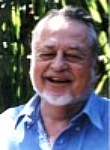 Of the many scientists who have studied and tested magnetic water treatments, Dr. Gerhard Pioch, an Austrian researcher, reported that residues from poisonous chemicals, heavy metals and harmful substances in the human body, most commonly, are of negative polarity and are not eliminated from the body. In using magnetically treated water, Dr. Pioch discovered that chemical wastes in the body were washed out by the treatments. Contaminants deposited into the body, such as medications, fertilizers, food-borne chemicals, pesticides (including traces of DDT) and heavy metals are neutralized by the magnetized water treatments. In summary, water has the ability to assimilate the properties of other things, so too can water become magnetized, providing a beneficial effect for almost any ailment, especially disorders of the digestive, nervous, cardiovascular and urinary systems.  According to creative and visionary Japanese
researcher
Masaru Emoto,
Water has a very important message for us. Water is telling us to take
a much deeper look at our selves. When we do look at our selves through
the mirror of water, the message becomes crystal clear. We know that
human life is directly connected to the quality of our water, both within
and all around us.
According to creative and visionary Japanese
researcher
Masaru Emoto,
Water has a very important message for us. Water is telling us to take
a much deeper look at our selves. When we do look at our selves through
the mirror of water, the message becomes crystal clear. We know that
human life is directly connected to the quality of our water, both within
and all around us.
There are No Substitutions Drinking water is of vital importance for all bodily processes and functions. People who do not drink enough water, or the right kind of water, allow for accumulation of waste in their cells and blood vessels which speeds up the occurrence of disease and illness. If you replace water with other beverages such as soft drinks, coffee, tea, and alcohol, which are all forms of diruetics, you will urinate more frequently than normal, creating a general state of dehydration, resulting in urinary tract infections and cellular damage. 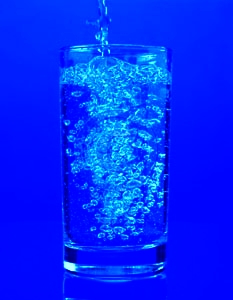
Your body needs constant water replenishment to maintain optimum health, keep a clear mind, and maintain a good balance within your tissues. Vibrant Vital Water is refreshing; its cool, calming effect revives and strengthens our body with no harmful side effects. The standard recommendation is to drink at least eight 8-ounce glasses per day. Active individuals and athletes require even more daily water consumption. Some professionals recommend that you drink as many ounces of water as half your body weight in pounds. Example: a 250 lb person would need to drink 125 ounces of water daily! The human body needs a constant supply of fresh, living water to replenish and maintain health and to keep a clear mind. The body has a natural ability to repair and to heal itself, as long as it has sufficient energy. The production of this energy is sustained by the stability of the cell's electrons. Drinking water with high levels of ionization supports the cells in maintaining the stability of their electrons, enhancing health and longevity. When the cells process nutrients more efficiently and flush out toxins before they accumulate, the immune system is strengthened. Vortexing water activates, vitalizes, and may help the body prevent disease. 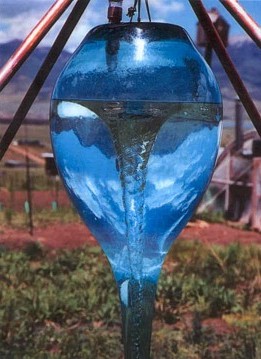 Viktor Schauberger, a brilliant Austrian inventor and naturalist who established solid evidence for the huge difference between 'dead water' and "living water." "Dead water" is still water; such as bottled or distilled water. Living water, like the water found in springs and rivers, forms spirals or vortices as it flows, causing higher zeta potentials, higher ionization, oxygenation, as well as raising the the electron count. MagnaSoil, a highly paramagnetic ancient ore from the Canadian Rockies, also positively affects water. Its high electron activity and higher electron spin frequency increase the compatibility of water and reverses the polarity of all contaminants, thus neutralizing their negative effects. 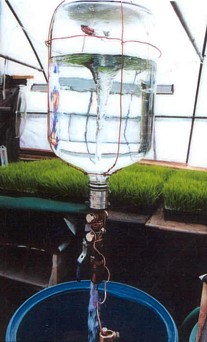 Ferguson notes: "The quest to understand water hasn't summoned up the capital and glamour of space research, although it may have more direct bearing on our lives. While humans burn rain forests and alter other factors that kept our habitat moist, we should remember the nagging suspicion that Mars was once a watery planet." References; 1. 'Dancing with Water: The New Science of Water' by M. J. Pangman & Melanie Evans 2. Theodore Schwenk, Sensitive Chaos 3. Callum Coates, Living Energies: Viktor Schauberger Explained 4. LJ. Henderson's basic work: 'The Fitness of the Environment' on the important processes of osmosis and diffilsion within the living cell. 5. Wolfgang Ludwig, physicist for the World Research Foundation Other resource materials; 1. The Water Wizard, Viktor Schauberger 2. On the track of Water's Secret, Hans Kronberger & Siegbert Lattacher 3. Your body's many Cries for Water, F. Batmanghelidj, MD 4. Discovery of Magnetic Health, George J. Washnis & Richard Z. Hricak 5. Living Water, Olof Alexanderson 6. Magnetism and it's Effects on the Living System, Albert Roy Davis & Walter C. Rawls, JR. 7. The Healing Energies of Water, Charlie Ryrie 8. Paramagnetism, Rediscovering Nature's Secret Force of Groth, Dr. Phillip S. Callahan Let Water Move, Keep it Cool We've had ample warnings. Austrian forest warden Viktor Schauberger (1885-1958) warned about wastelands that did and would appear on our planet when vast forests disappear. He observed the interaction between water and forest, such as the vitality of cold, pure water in tree-sheltered streams. He admonished: "Comprehend nature, then copy nature." He taught that water is a living rhythmic substance. In maturity, it gives of itself to everything needing life. However, water can become diseased through incorrect handling. Dying water harms animals, plants, and fish.  In his book "Living Water", Olaf Alexandersson introduces Schauberger's insight into river management, water-fueled devices and energy. Its successor is the book by Callum Coats, Living Energies, that could be the textbook for a new eco-technology to construct or encourage processes that don't fight nature but instead work in harmony. Coats researched for two decades into Schauberger's discoveries from forestry to flood control, to soil fertility and water purification. By reading this book, hydrologists could learn how crucial the small variations are in a river's temperature, and how water's spinning motion recharges it with subtle energies. Water Power without Dams The naturalist's warning echoes across the decades: "Prevailing technology uses the wrong form of motions." Twentieth-century machines leave behind waste products because their processes use the destructive half of nature's creation/destruction cycle -- the centrifugal outward moving motions of heating, burning, pushing, radiating or explosion. 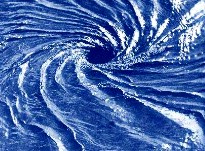 This "water magician" found solutions for agriculture and energy generation, as well as transporting water in pipes, that encourage the inward-spiraling motion of water. Today's researchers follow and expand on Schauberger's earlier knowledge.  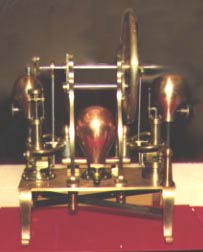 Dale Pond, researcher of Keely's physics, says that Keely's Hydro-Vacuo motor created a water hammer shock wave which, when synchronized with the wave's echo, "results in Amplitude Additive Synthesis, a process which tremendously increased energy accumulations in quick order. Pond warns that this resonance amplification is similar to the process which breaks wine glasses. Liquid Memory, Do We Really Know Water? Recent research has revealed one water molecule has 440,000 individual panels. This means that one molecule can carry 440,000 bits of information. Water is a liquid crystal. Its the most programmable substance on the planet. 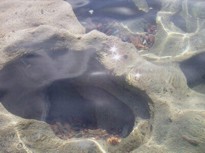 Then there's the movement-vitality factor. Stagnant bottled water, even though chemically clear, is dead compared to water in the rushing brooks. But it has to be proper movement. As water is pushed through cities in the unnatural confines of metal pipes, its energetic oscillations interfere, water's structure becomes unorganized. This also robs the natural magnetic properties found in water that comes from the earth. 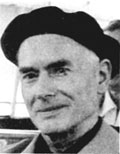 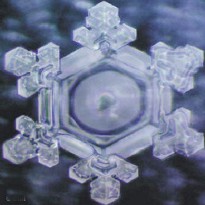 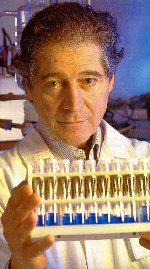 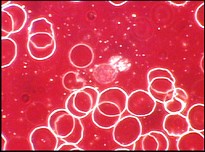 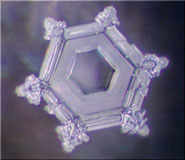 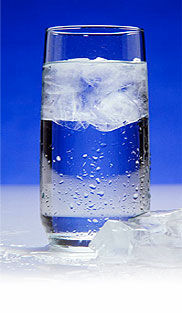 One of his inventions condenses water from air. "That's one of the biggest things I've been working on by using frequencies to draw moisture out of air." He and researchers from Los Alamos National Laboratory are working on "a program where you can take a photocell device, put it out in the desert, and it will make a gallon of water overnight". The unit is powered by photovoltaics (electricity from sunlight). Ziesenus agrees with Dr. Schweitzer's claim that our AC electricity leaves a harmful imprint on water.  Dr. Mu Shik Jhon (1932-2004) was born in 1932 in Korea. As a young man, his love for natural sciences took him to Seoul National University where he completed his undergraduate and graduate degrees in Chemistry. After 8 years as an assistant and associate professor at Dongguk University in Seoul, he decided to pursue a Ph.D. at the University of Utah under the direction of the famous Dr. Henry Eyring. As a result of their work together, he and Dr. Eyring became life-long friends. Between 1964 and 1982, they published nearly 50 scientific papers and one book together. With the completion of his doctorate degree, Dr. Jhon accepted the position of assistant professor at the University of Virginia and then returned to Korea as head of the Liquid State Chemistry Research Laboratory at the Korea Institute of Science and Technology. Between 1971 and 1974, Dr. Jhon served as a visiting professor with the University of Utah, where he is still an adjunct professor. He has also been a visiting professor at the University of Paris (1975-76) at Kyoto University in Japan (1980) and at the University of Florida (1986-87). In 1971, Dr. Jhon became a professor of Chemistry at the Korea Advanced Institute of Science and Technology where he has been Dean of Faculty, Director of the Center for Molecular Science and Chair Professor. During his career, Dr. Mu Shik Jhon published over 250 scientific papers.(listed as the author's bibliography at the end of his book, The Water Puzzle an the Hexagonal Key). He received over 30 honors and awards, including the Grand Science Award and the Presidential Award of Science. He presented papers at over 250 scientific gatherings and was recognized for his work on the Theory of Liquids, The Structure of Water, The Properties of Electrolyte Solutions, The Properties of the Hydrogen Bond, Statistical Mechanics, Chemical Rate Theory on Polymers and Quantum Chemistry. Dr. Jhon's research has helped us to understand why hexagonal water is energetically more powerful than unorganized water. He showed that the amount of energy (calories) that hexagonal water can store/transfer is measurably greater than unorganized water. This is an indicator of its capacity to perform work within the body and it explains why hexagonal water is the preferred choice of biological organisms. Dr. Jhon's research focused on several of the factors that participate in the creation of hexagonal water. He and others identified the importance of magnetic and electric fields, the role of minerals and the impact of temperature, movement and pressure on the structure of water. Dr. Jhon's research showed that the structure of the water within the human body was significant around proteins and especially around DNA. He found differences in the structure of the water surrounding healthy and diseased DNA, and verified the existence of greater numbers of hexagonal units in association with healthy proteins. According to Dr. Jhon, "...when the structure of the water near cells is compromised, the cells are more vulnerable to external stimuli. Ultimately, cells surrounded by less structured water are weaker and more prone to malfunction and genetic mutation." Beyond these important scientific contributions, Dr. Jhon was one of the first to document that drinking hexagonal water could improve the functioning of the human body. He showed that drinking hexagonal water improved food transit time through the colon, reducing constipation and bowel discomfort within weeks. Dr. Mu Shik Jhon will forever be remembered in the scientific community for his numerous contributions. But for those of us who are able to drink hexagonal water on a daily basis, his contribution to our understanding of the structure of water is invaluable. Dr. Mu Shik Jhon is considered to be the world's leading authority on the structure of water. His research has identified Hexagonal Water as the preferred biological choice. Dr. Jhon's book, The Water Puzzle and the Hexagonal Key, recently translated into English, summarizes his 40 years of research. It includes studies that show hexagonally-structured water has been associated with:
His work also shows the existence of Hexagonal Water in association with the healthy tissues of the body. Studies are presented showing the direct correlation between unstructured water (lacking the specific hexagonal structure) and a number of diseases. Dr. Mu Shik Jhon's Molecular Water Environment Theory: The Molecular Water Environment Theory, which was presented in 1986 states:
What is Hexagonal Water? Hexagonal Water is a specific arrangement of individual water molecules where 6 H2O units consistently link to form a ring-like structure. This unique arrangement is the basis of a more complex crystalline network that is formed when numerous hexagonal units join together. All water contains a certain percentage of hexagonal units - some sources more than others. The percentage of hexagonal units appears to depend on a number of factors, including the energetic influences that water is exposed to. For example: chlorine, fluoride and many pollutants typically found in municipal waters sources reduce the number of hexagonal units. Tap water typically has a very low percentage of hexagonal structures. On the other hand, there are a number of places throughout the world where the water has a high concentration of hexagonal structures. Many of these places are known as "healing springs." Others are known for producing inhabitants that live long and disease-free lives. How do we know when water is hexagonally structured? Nuclear Magnetic Resonance (NMR) is one of very few methods that can verify molecular size. NMR analysis shows that ordinary tap water is composed of large molecular units (between 12 and 20 individual H2O units). These unorganized molecular conglomerations must actually be metabolized (broken down) before they can enter the cell. Hexagonal water, on the other hand, easily penetrates the cellular membrane - many times faster than tap or bottled water. Hexagonal Water is energetically more powerful! Dr. Jhon's research has helped to show why Hexagonal Water is energetically more powerful than unstructured water. The amount of energy (calories) that Hexagonal Water can store/transfer is measurably greater than unstructured water. This is an indicator of its capacity to perform work within the body and it explains why Hexagonal Water it is the preferred choice of biological organisms. According to Dr. Jhon's research, Hexagonal Water is able to activate enzymes, support the immune system and contribute to greater metabolic balance. William Tiller At the Living Water conference, professor emeritus William Tiller quietly obliterated the conventional view that humans cannot meaningfully interact with their experiments. "Conventional science would even more emphatically state that specific human intentions could not be focused into a simple electronic device, which is then used to meaningfully influence an experiment in accord with the specific intention. We have made a valid test and found that conventional science conclusion to be in serious error." 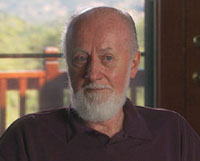 The theory used by Tiller and co-researcher Walter Dibble, Jr., is multi-dimensional. These scientists see water as a special material "well suited for information/energy transfer from this frequency domain into our conventional domain of cognition, the physical". Regarding the factor of mental capability of whether imprinters know enough science to visualize changes in pH, Dr . Tiller said, "the unseen intelligence of the universe is an even more important factor. Hydrogen Medicine Hydrogen: Fuel of Life Hydrogen - The Simplest Element Water and hydrogen are two of the most underrated substances on the planet. Separately, they play a role in nearly all metabolic functions. When used together as hydrogen-rich water, their potential is magnified many times. 1. Hydrogen is a healer – the fundamental antioxidant. When carried in water it reaches every organ and every cell.Albert Szent-Györgyi, the Nobel Prize-winning biochemist, said that hydrogen, rather than oxygen, was the fuel of life. Everyone knows we need oxygen to live, but oxygen’s counterpart (hydrogen) is the real fuel. Oxygen burns hydrogen releasing the energy (in the form of ATP) that runs our bodies. Water supplies both the fuel (hydrogen) and the fire (oxygen); it is hydrogen that is often the limiting factor. The word hydrogen comes from the Greek, meaning “water-former.” Water is formed when hydrogen is burned by oxygen. It is created every day in our bodies as we burn hydrogen to create ATP. Hydrogen and oxygen participate in a continuous cycle that generates both water and energy. Dr. Szent-Györgyi was the first to show that the human body stores hydrogen in many of its organs. He referred to this as hydrogen pooling and he identified the organs that pool the greatest amounts of hydrogen. The liver pools the most hydrogen; it requires hydrogen to neutralize free radicals produced during detoxification. In 2001, a group of researchers reported that animals maintained in a hydrogen-rich environment were significantly protected from chronic liver injury. Later research demonstrated that inhaled hydrogen gas (~4%) had antioxidant properties that could protect the brain against stroke. U.S. Military documents indicate that hydrogen is an effective means of protection and repair against radiation injury. Many other studies have established the significance of a hydrogen enriched environment. Stress, poor diet, and pollution, deplete the pools of hydrogen in our bodies. In our modern society, most people are hydrogen depleted. When we think of hydration, we think of water. But when the body calls for water, it is hydrogen it wants. Chapter 6 of Dancing with Water examines the relationship between hydrogen and oxygen revealing that the absence of hydrogen is the underlying cause of dehydration which has been linked to many maladies. All the symptoms of disease and aging are, in one way or another, accompanied by slow dehydration. By increasing the amount of hydrogen we get every day and by replenishing our hydrogen pools, we can relieve many symptoms—and improve our level of energy. Food, air, and water are all sources of hydrogen. Some sources have greater amounts of hydrogen than others; the hydrogen in some sources is more available than others. There are a number of ways to maximize the hydrogen in food, air, and water: Food is a primary source of hydrogen. Carbohydrates contain equal parts of hydrogen, carbon, and oxygen. However, the hydrogen in food is tied up in complex molecules. Food must be metabolized (broken down) to release the hydrogen. Dr. Szent-Györgyi identified the series of reactions that liberate hydrogen from carbohydrates. He said: The foodstuff, carbohydrate is essentially a packet of hydrogen, a hydrogen supplier and hydrogen donor, and the main event during its combustion is the splitting off of hydrogen. So, although food is a primary source of hydrogen, it requires work for the body to release it. Cooking burns off a large portion of the hydrogen in food. To maximize the available hydrogen from your diet, try eating more food in its natural raw state. The air we breathe also contains hydrogen—but in tiny amounts. The amount found in the atmosphere is significantly less than 1%. Yet, the hydrogen from the air is immediately available for use by the body. It is absorbed into cells and tissues the moment it enters the respiratory tract. One way to enhance the air with hydrogen is to use an air ionizer or to place warm salt lamps in your living environment. Both methods produce an abundance of negative ions—many of which are hydrogen. No wonder people feel so good when they breathe ionized air. Ionized air is also plentiful in the presence of moving water—especially waterfalls, and at the ocean where saltwater continually releases ions into the air. 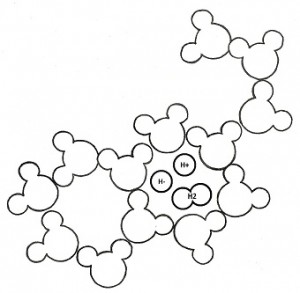 The last way to increase the amount of hydrogen you get on a regular basis is to enrich your water. Structuring water creates tiny cages that attract and hold hydrogen. There, hydrogen contributes to the stability of water’s structure and to water’s energetic potential.
The last way to increase the amount of hydrogen you get on a regular basis is to enrich your water. Structuring water creates tiny cages that attract and hold hydrogen. There, hydrogen contributes to the stability of water’s structure and to water’s energetic potential.Research with hydrogen-rich water indicates it has antioxidant effects (for the amelioration of a broad spectrum of health concerns) and that it can play a role in the reduction of diabetic symptoms. Structured water has been reported for many years to reduce the symptoms of blood sugar imbalance. Perhaps this is because of the additional hydrogen structured water holds. How to make hydrogen-rich water Structure your water first using any of the methods described in Chapter 11 of Dancing with Water. Don’t forget to add salts—especially if you start with RO or distilled water! Hydrogen is often carried along with minerals (salts). Hydrogen-rich water can be created in two ways. The first is to place something in the water that releases hydrogen. Dr. Hayashi’s Hydrogen Stick works on this principle; Another product called Active H-minus works in a similar manner to release hydrogen in water. When water is structured first, more hydrogen is retained in the water matrix as hydrogen is released. The other way to enrich water with hydrogen is to draw hydrogen into the water. Hydrogen is attracted to higher vibrations, so anything that raises the vibration of your water will attract hydrogen. The use of laminar crystal, tensor rings, ANCHI Crystals, tourmaline, quartz crystals, egg-shaped vessels, and love all help to draw more hydrogen into water. Several of these ways spin elements into their ORMUS state which creates an even more stable structured water matrix. Using hydrogen-rich water will begin a detoxification process. Don’t take it too fast. Listen to your body. Start with one glass of hydrogen-rich water a day – see how you do for several days – then gradually increase. Have fun dancing with hydrogen-rich water! Heavy Hydrogen Heavy hydrogen is called deuterium. It has an extra neutron in the nucleus of the atom that affects some metabolic processes. New science reveals that making deuterium-depleted water can have additional benefits. M. J. Pangman, MS & Melanie Evans Authors of 'Dancing With Water' Potential of Molecular Hydrogen for Preventive and Therapeutic Applications By Shigeo Ohta Department of Biochemistry and Cell Biology, Institute of Development and Aging Sciences, Graduate School of Medicine, Nippon Medical School Progress_in_Hydrogen_Medicine.pdf Water: Nature’s Elixir for Healthy Aging and Brain Health By Bruce D. Curtis, MA and Marianne L. Curtis, CAMT, CFT* "Every function inside the body is regulated by and depends on water. Water must be available to carry vital elements, oxygen, hormones, and chemical massages to all parts of the body. Without sufficient water to wet all parts equally, some more remote parts of the body will not receive the vital elements that water supplies. Without sufficient water to constantly wet all parts, your body's drought-imanagement system kicks into action. The histamine-directed chemical messenger systems are activated to arrange a new, low quota of water for the drought-stricken area. When histamine and its subordinate "drought managers" come across pain-sensing nerves, they cause pain. This is why dehydration produces pain as its first alarm signal. If the dehydration persists and is not corrected naturally with water, it becomes symptom-producing and, in time, develops into a disease condition." -From Your Body’s Many Cries for Water by F. Batmanghelidj, MD Background The oxidative theory of aging is so well established in the health sciences that it has become an accepted axiom. In fact, we trace its origin in 1954 to Dr. Denham Harman of the University of Nebraska who is recognized as the father of the Free Radical Theory of Aging (FRTA). This theory and subsequent clinical research has led to an explosive growth in specialized functional food products that tout their anti-oxidant qualities, to such an extent that one can even see the claim of anti-oxidant action on cans of Cherry 7-Up! None of the popular claims can diminish by one iota the foundational significance of anti-oxidant action for longevity. More careful examination of biochemical processes, however, reveals a much more complex chain of reactions that leads to additional toxic by-products and oxidative radicals that result from the initial anti-oxidant reaction. Moreover, none of the miracle anti-oxidant foods seems to be presented with the understanding that achieving the desired effects of the food is entirely dependent upon a satisfactory intake of water. To re-iterate Dr. Batmanghelidj’s words: "Without water, this solid matter is absolutely useless." Thus, health care practitioners must always consider the primacy of water in the protocol they recommend, no matter what the ailment. To prescribe supplements without considering the means of their uptake is not precise. On this point Dr. Hidemitsu Hayashi, pioneer in the clinical study of healthy water, has commented, "Any dietary recipe cannot be a scientific one if property of water taken by the patients is not taken into consideration." The Mitochondria Theory of Aging Related to the Free Radical Theory of Aging (FRTA) is the Mitochondrial Theory of Aging (MTA), again proposed by Denham Harman in 1972. Critical in the MTA is the contrast between nuclear DNA and mitochondrial DNA (mtDNA) which lies in the lack of histone protein protection and various enzyme repair systems in mtDNA that are common in nuclear DNA. This leaves mitochondrial DNA much more subject to the vagaries of oxidative radicals, especially the particularly damaging reactive oxygen species (ROS). The finer details of the entire mitochondrial aging process can be learned by reading The Mitochondrial Theory of Aging(2), and by studying proceedings of MiMAGE(3). How is water linked to aging in the Mitochondria? Since water is governor of cellular activities, we need to better understand why and how intracellular water is so vital, but most importantly in the mitochondria. However, it is not a simple factor that is a consequence of aging, there is no formula for the loss of intracellular water. German studies indicate that the loss of water in the mitochondria is more significant than loss of water in the cytoplasm. Dr. David Wheeler, DC writes: "The mitochondria is the energy supplying component of all the cells in the body, which allows the infinite array of biochemical mechanisms to take place properly that start at the foundation of DNA cell replication as well as immune system function as the primary defense against all disease. Therefore, as a person ages based on an ever increasing dehydration of the mitochondria there is an increase in the aging process of the cells. This in turn causes a breakdown of all the glands, organs and systems of the body. The body as a whole becomes more and more subject to disease based on a loss of potential longevity. If there is a way to counter the dehydration of the mitochondria then the aging process will slow down and a person will live longer." In fact, the production of ATP is dependent upon 2 functions of cell physiology: the Krebs cycle or "citric acid cycle," and that of oxidative phosphorylation or electron transport chain (ETC). Lesser known, is that the reduction cycle depends upon hydrogen for the proton pump which supplies the protons to phosphorylate ADP into ATP. Without this hydrogen, ATP production would be impossible, and there would be no energy for any bodily function. This discovery led to the award of a Nobel Prize to Dr. Peter Mitchell in 1978 for his theory "Chemiosmosis." To summarize, energy production for the entire human organism depends upon the flow of electrons and protons. The energy gradients formed by them are the essence of cellular biophysics. This confirms the fundamental insight of Dr. Albert Szent-Gyorgi in 1937, in which he observed: "Hydrogen is the only fuel the body recognizes." Dr. Szent-Gyorgi also found that hydrogen pools in 6 major organ systems for ready availability for physiological needs. Specifically, he found that the order of hydrogen pooling is: Liver>Intestine>Kidney>Heart>Lung>Spleen. Liver tissues store the most hydrogen, while the spleen stores the least. This is interesting in view of the fact that the liver is your body’s first line of defense and needs a supply of the most antioxidants in order to do its work of detoxification. To summarize, a primary task in supporting human longevity rests in helping protect the mitochondria from dehydration. But there is another energy factor at work with water that we must understand, and that is the quintessential role of hydrogen to maintain energy production which ensures proper cellular function, transcription accuracy for DNA, and thus proper cell replication. What’s more, additional energy means more vitality. Further, as we will see in the next section, hydrogen aids detoxification by removing harmful metabolic waste and protects the cells by reducing damaging free radicals. Hydrogen, the most prevalent element in the universe and in our body, is therefore, the hidden key to our youthful health and vitality. Functional Water – Hydration plus Hydrogen Japanese research going back into the 1980’s has augmented the understanding of the central role of water in supporting the human body’s efforts to heal. Dr. Hidemitsu Hayashi began pioneering the use of electrolyzed water as a complementary treatment with health protocols. His clinical observations revealed incredible promise for functional water, particularly in the diversity of problems it addressed and conditions it ameliorated. In 1997 he published a paper on the role of reduced water as an anti-oxidant, with his colleague Dr. Sanetaka Shirahata.6 As one of the most quoted studies on water, this paper has been used by the water electrolyzer industry to promote sales of literally dozens of different designs of water machines claiming to alkalize the body and heal all manner of disease. However, lost in the history of science was Dr. Shirahata’s brilliant insight about which parameter of the water was effective in aiding the body. Was it the pH or was it something else? The body has very complex homeostatic mechanisms for maintaining its acidity and alkalinity of different parts. Cell membranes are very acidic and must remain so. Blood has a tiny window of pH 7.35 to 7.45, and whenever it moves outside that range, biochemical responses occur to bring it back, such as the release of carbonate to alkalize. What was Dr. Shirahata’s conclusion about the real key to electrolyzed reduced water (ERW)? It was this: The reduction of proton in water to active hydrogen (atomic hydrogen, hydrogen radical) that can scavenge ROS is very easily caused by a weak current, compared to oxidation of hydroxyl ion to oxygen molecule. Activation of water by magnetic field, collision, minerals etc. will also produce reduced water containing active hydrogen and/or hydrogen molecule. Several natural waters such as Hita Tenryosui water drawn from deep underground in Hita city in Japan, Nordenau water in Germany and Tlacote water in Mexico are known to alleviate various diseases. We have developed a sensitive method by which we can detect active hydrogen existing in reduced water, and have demonstrated that not only ERW but also natural reduced waters described above contain active hydrogen and scavenge ROS in cultured cells. Dr. Shirahata traveled to various parts of the world to investigate a number of healing waters and test them for hydrogen content. Finding them rich in molecular and atomic hydrogen, he decided to bring back samples to Dr. Hayashi in Japan. When he returned, he found that all of the hydrogen had escaped. What remained for him was the inescapable conclusion that it was the hydrogen in the reduced waters that was making the tap water into functional water. This realization became solidified in 2007 with the publication of another study by another group of scientists, this time published in Nature Medicine, showing that indeed the active hydrogen is able to scavenge reactive oxygen species (ROS) in cell cultures.8 Since 2007, researchers have done both in vivo and in vitro studies involving the use of hydrogen-rich water. Expanding research with reduced water has finally drawn the proper attention to the role of water and has spawned a vast array of approaches to functional water and to the various parameters of water that might be significant. One prevalent example is the work with structured water. It has been hypothesized that smaller clusters of water molecules are critical for increased hydration, and some studies seem to back up this assertion. Nonetheless, it should be remembered that water is a food and needs to be metabolized. The aquaporins in the cell membrane are the small channels that admit water into the cell and they only allow one molecule of H2O at a time, so the work on clustered remains a bit obscure and still needs peer-reviewed studies to support its claims. The work with hydrogen-rich water does, on the other hand, find great support in the literature, and a rapidly growing body of evidence in peer-reviewed studies. Medicine of the Future – Hydrogen-rich Water An examination of the published studies on hydrogen-rich water and its effects reveals a promising development in the medical research field. Many of these studies are being done by scientists at a new center in Kawasaki, Japan. It is the Center of Molecular Hydrogen Medicine, Institute of Development and Aging Sciences at the Nippon Medical School. Hydrogen-rich water as a true functional water is so promising as to have inspired a whole new branch of medicine in Japan. This new approach to hydrogen medicine is an expression of the ever-expanding potential of integrative medicine. As the community of healers recovers deeper insights into the ancient wisdom of food as medicine and water as medicine, we will all see how the future and the past can come together. With the body being 70% water and the brain 85% water, how we ignore the primary importance of nature’s elixir in our health and vitality? With the addition of active hydrogen, we will appropriate for our daily hygiene the power of some of nature’s greatest healing springs. In that perhaps Dr. Hayashi’s vision will come to pass: that one day hydrogen-rich water will become a simple and effective daily hygiene for youthful vitality, health and beauty. *Authors Bruce and Marianne Curtis have served on the editorial board of the Journal of Alternative and Complementary Medicine, and currently work with functional foods and functional water. Marianne has maintained a practice in oriental medicine for over 18 years. Bruce has written and lectured on the future of medicine. References 1. Harman, D. (1972) "The biological clock: the mitochondria?" J Am Geriatr Soc 20: 145-47. WHY NOT? Seven reasons NOT to drink alkaline ionized water With so much discussion of the need to alkalize, one of the biggest questions people have is whether or not to drink alkaline ionized water. A great deal has been written on the subject by many well-intentioned individuals. However much of the information being circulated regarding the health benefits of alkaline ionized water is either inaccurate or incomplete. There are seven major reasons (and many minor ones) why NOT to drink alkaline ionized water. 1. Alkaline water may hinder digestion. The first and the most obvious red flag regarding the consumption of alkaline ionized water is its potential impact on digestion. Since the digestive process begins in the stomach—an extremely acidic environment—a person must ask the question: What is the impact of alkaline water on the digestive process? Fifty percent of people over the age of 60 are hypochlorhydric. This means that they can no longer produce enough stomach acid for optimal digestion. For these individuals, the consumption of alkaline water presents a problem. You might be surprised to discover how many people who drink alkaline ionized water end up with digestive trouble—and they have no idea it was caused by the water. Many of those who promote alkaline water are aware of this issue . . . that’s why they suggest NOT drinking it before meals. 2. Alkaline water does not balance the body’s pH. One of the arguments used in favor of alkaline water, supposes that its consumption will alkalize the body and negate the buildup of acids caused by our modern diet and lifestyle. If consuming alkaline food and alkaline water negated an acidic cellular environment, then eating well-cooked meat (known to be alkaline) would overcome acidity. Eating cooked meat does the exact opposite. By the same token, eating a lemon would contribute to acidosis — but lemons are known to be one of the most alkalizing foods. Obviously, balancing acidity in the human body is not as cut and dried as some would like to think. The consumption of acids or bases (alkaline), does not necessarily balance cellular pH. And while drinking alkaline water sometimes increases urine pH, it is not an indicator that the body’s pH is in balance. When measuring the fluids of the body, (particularly saliva and urine) several factors should be interpreted together to get an accurate picture. Equally important measurements of these fluids are: resistivity/conductivity, specific gravity, and rH2. One measurement without the others can be misleading. Measuring the pH of urine (a reflection of what the body is letting go of) is an oversimplification. Increased urine pH could also mean that the body is having to get rid of excessive alkaline minerals that are not in a form the body can utilize. When it comes right down to it, the body prefers to receive minerals in an organic form (in food). In this way, alkalizing minerals are linked with organic acids. This is the reason lemons contribute to alkalinity– they contain an abundance of alkalizing minerals yet they are balanced with organic acids so that the body can recognize and utilize them. All raw plant foods are acidic (with the exception of a few herbs). They are made of organic acids combined with organically-complexed minerals. This is the reason raw food tends to balance the body’s pH in a way that alkaline water cannot. 3. Ionization damages water’s life force. Another reason NOT to drink alkaline ionized water has to do with the molecular structure of water. Nature creates liquid crystalline (structured) water using movement and weak electromagnetic fields. Those who sell ionizers believe that the strong electric current used during ionization produces the same kind of water. It does not. Although electric currents cause water molecules to become more organized, strong electric currents (like those used during ionization) have a damaging effect on the electromagnetic field around water molecules. Ionized water is not coherent and it is not capable of maintaining long-range molecular organization. The water loses its structure when it is removed from the electric field. Water that has been treated in this manner is aggressive. It is no longer capable of carrying the finely-tuned signals and other vibratory information that water is intended to carry within the human body. 4. Alkaline ionized water contains minerals in an inorganic form that contribute to arterial plaque and joint disorders. During ionization, water molecules are split (ionized). Positively-charged water ions (H+) are attracted to negatively-charged mineral ions (phosphate, chloride, sulfide, iodide, etc.) to form a variety of acidic compounds in the acidic stream of water. Negatively-charged water ions (OH-) are attracted to positively-charged mineral ions (calcium, magnesium, sodium, potassium) to form numerous alkaline compounds in the alkaline stream of water. The most common alkaline mineral compounds that form in alkaline ionized water are calcium hydroxide (lime), sodium hydroxide (lye), potassium hydroxide (caustic potash), and magnesium hydroxide (milk of magnesia). And because of the strong electric forces used during ionization, these compounds are not easily broken down. The alkaline minerals are not available for use in the body. If a person’s kidneys are functioning well, these inorganic mineral compounds will be excreted in urine. If not, they may end up as arterial plaque or as mineral deposits in joints and other tissues. 5. Alkaline water is imbalanced. Water ionizers separate water into two streams. The alkaline stream is consumed by those who drink ionized water. The chemistry of life is dependent on the balance between acids and bases. One without the other, for an extended period of time, is an invitation for trouble. 6. Alkaline ionized water may cause cell death and fibrosis of the heart. While alkaline ionized water has been in use in Japan for over 50 years, its use (until recently) has been restricted to clinical settings where the water was used in controlled amounts for short periods of time. There are no long-term studies to identify potential problems with either the extended or the exclusive use of this type of water. In the absence of controlled human studies, rats (with a shorter life span) have been the subjects of investigation. Three separate studies have shown that long-term consumption of alkaline ionized water produces cell death (necrosis), fibrosis, and other complications in the heart muscle in rats. Read abstract #1 Read abstract #2 Read abstract#3 Dr. Hidemitsu Hayashi, a cardiac surgeon and Director of the Water Institute in Japan, was one of the scientists who conducted early research on alkaline ionized water. His work determined that the benefits of alkaline ionized water were due to hydrogen in the water. Ultimately, he renounced the use of ionized water in favor of other methods to produce hydrogen-rich water. 7. Alkaline ionized water is aggressive and unnatural. One of the biggest arguments in favor of alkaline ionized water is that its strong electron potential neutralizes free radicals. While it is true that alkaline ionized water has a strong electrical potential (evidenced by negative ORP values), the rH2 value (hydrogen potential) is a more accurate representation of electron potential than ORP alone. It measures the reducing power of a substance without the skewing effects of pH. Understanding rH2 measurements and Biological Terrain Analysis helps in the realization that water with a strongly negative ORP value is out of balance for the human body. It may initially contribute to a reduction of the free radical load however, continued consumption and the aggressive neutralization of oxygen radicals upsets cellular redox balance which plays a pivotal role in immune function and metabolic homeostasis. Oxygen radicals serve as signaling molecules. Medical research verifies that their absence is equally as harmful as their overabundance. The ongoing consumption of alkaline ionized water tips the balance and it opens the way for other metabolic consequences. Nature is about balance -- not extremes. In Traditional Chinese Medicine, taking strong “Yang” herbs and other substances (like alkaline water) for too long, overheats and burns the body out. Ultimately, it contributes to aging. Alkaline ionized water can be therapeutic for short periods of time but it should never be consumed on a regular basis unless you are prepared for digestive problems, organ failure, arterial build-up, joint calcification, and metabolic imbalances. More in-depth information can be found in Chapters 5 and 6 of Dancing with Water. M. J. Pangman, MS & Melanie Evans Authors of 'Dancing With Water' Reasons NOT to drink flouride in water Despite the fact that many technologically advanced countries have stopped or banned the use of fluoride in water, the U.S. and Canada continue to promote water fluoridation. Fluoride (in the form of sodium fluoride, fluorosilicic acid, or sodium fluorosilicate) is added to many municipal water systems. Yet according to a growing number of scientific studies, fluoride is a health risk at any level. In January 2011, Health and Human Services and the Environmental Protection Agency announced their intent to review the maximum allowable amount of fluoride in drinking water. This was based on recent data that indicates allowable levels may be contributing to dental fluorosis,* skeletal fluorosis and other symptoms. A shocking 41% of adolescents 12-15 years old in fluoridated communities now have dental fluorosis! *Dental fluorosis is a defect in the enamel of the teeth caused by too much fluoride. Affected teeth show discoloration, ranging from white spots to brown and black stains. Teeth with fluorosis are more porous. In severe cases, the porosity results in extensive pitting, chipping, fracturing, and decay of the teeth. Most fluoride that is added to municipal water is an unnatural form of fluoride that contains sodium. It is over 80 times more toxic than naturally-occurring calcium fluoride. The Material Data Safety Sheet (MSDS) for sodium fluoride shows the lethal dose (LD-50) that will kill 50% of a population of rats is 52 mg/kg. (That’s why it is used as rat poison.) The LD-50 for calcium fluoride is 4250 mg/kg.—less toxic than table salt. The fluoride ion (F-) is extremely reactive and strongly attracted to calcium. Its preference for calcium overrides its attraction to other ions. In nature, fluoride is most often bound to calcium. When fluoride is added to water in the sodium form, it is only a matter of time before the sodium is exchanged for calcium. When sodium fluoride is ingested, it rapidly robs the body of calcium. In fact, sodium fluoride poisoning results when calcium is stolen from the blood. The anecdote (calcium) makes enough calcium available so that it does not have to be stolen from the body. According to the National Academy of Sciences, fluoride is not an essential nutrient and no amount of fluoride is necessary in the human body. The human body does not need fluoride for any physiological process and no human disease will result from a “deficiency” of fluoride. Because it has no physiological function, when fluoride cannot be immediately excreted (via kidneys) it is taken to parts of the body where it can be sequestered. It is attracted first to calcified areas (teeth, bones, and pineal gland) and also ends up in nerve and connective tissues. The truth about fluoride It is not within in the scope of this article to discuss the negative effects of fluoride. If you are interested, there are numerous books on the subject and there is an abundance of information on the Internet. How do I get the fluoride out of my water? To top it all off, fluoride is difficult to remove from water. Most water filter sales literature avoids the subject. When buying a water filter, you may be comforted by reading that the system you are purchasing removes 95 to 99% of contaminants, but if it does not specifically state that it removes fluoride, you can bet it doesn’t. Fluoride is a very small ion (atomic number 9). It cannot be “filtered” out of water. At this time, fluoride removal is limited to four main methods discussed below.
The ultimate solution to the fluoride problem is to stop fluoridation. You may visit the Fluoride Action Network — http://www.fluoridealert.org/ to find out how you can make a difference in your community. M. J. Pangman, MS & Melanie Evans Authors of 'Dancing With Water' Disclaimer: Warning: The recommendations contained in this report, according to today's medical community, may cause adverse reactions in some people. This report is published under the First Amendment of the U.S. Constitution, which grants the right to discuss openly and freely all matters of public concern and to express viewpoints no matter how controversial or unaccepted they may be. The author/publisher assumes no responsibility in the correct or incorrect use of this information, and no attempt should be made to use any of this information as a form of treatment without the approval and guidance of your medical doctor. The ideas discussed in this report are not offered as cures, prescriptions, diagnoses or a means of diagnosing deficient conditions. However, documented and experimentally affirmed, the information contained is the expression of various opinions - and, therefore, is anecdotal - not approved medical fact. This report contains unorthodox ideas and opinions that are not accepted by the consensus of medical opinion. If you do not feel comfortable in being totally responsible for any consequences that may result from such ideas, please check with your physician or health counselor first. Preface: This report is meant to give you an understanding of: 1. The physical properties and qualities of water 2. How you can use water to heal and enhance your quality of life, and 3. How water can help maintain and extend your life. The first section focuses mainly on the scientific aspect of water. Much of the terminology in this section may be new to the reader, thus making it more difficult reading. Keeping in mind the idea of universal patterns may help make this section easier to understand. You will see the correlation between the cellular makeup of water and how it directly relates to you personally. The second section discusses the benefits of water to the body and the effects of the lack of water in the body. The third section gives some insights into the history of water and certain philosophies developed around understandings about water. We tried to keep these specific views separate. However, in order to tie together certain concepts what may be overlooked by the reader, there is some overlap. We hope that the reader will understand where science and medical views end and the personal, philosophical views of the author begin. Further, we expect that the reader will be responsible for judging the validity and value of the information as to how it may or may not apply to their personal health education and practices. It is not intended that an individual initiate any sudden changes in life style or medical care as a result of reading these materials without careful thought, consideration, and possibly consulting with a health advisor. 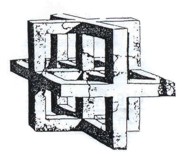 Understanding Water's Characteristics - Part I 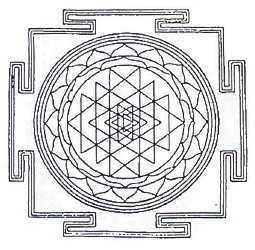 ... could water be the source of youth & your body the fountain? There are many different types of water on our earth - rain water, snow water, raw water, boiled water, hard water, soft water, tap water, heavy water, deionized water, filtered water, glacier water, distilled water, stagnant water, and polluted water are just some of them. There are three stages of water - alive, sick and dead. Dead water is water that is filled with too many substances and has also become stagnant. Through evaporation this water is vaporized and lifted into the skies and is renewed - its genesis takes place. It then condenses with high electrical energy in the atmosphere creating its zeta potential (life force), and it falls to the earth as rain or pure water to begin the process again. As the rainwater picks up colloidal minerals, the life of the water is enhanced and made more active and powerful. 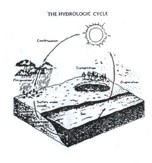 We know that the basic molecular formula for water is HOH or H2O. This formula is true for water only when it is in a vapor form. From the moment water is condensed from vapor into liquid, it becomes a much more complex formula. Water is the only substance on earth that is simultaneously available in three distinct states - solid, liquid and gaseous. In chemistry and physics, these three states of matter are known as phases. The state of each phase is dependent on the temperature of the substance. Most substances can be made to assume one or more of these three forms by manipulating its temperature or its temperate environment. 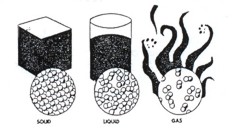 Since the basic formula for the individual water molecule is H20, which means that an individual molecule consists of two atoms of hydrogen bound to one atom of oxygen, it is similar in its structure to materials like tellurium, selenium and sulfur. If we examine these substances from physical point of view following known laws, we would expect these substances to follow certain rules. According to known laws, the lightest of these substances (which happens to be water) should have the lowest freezing and boiling points, and the heaviest of these should have the highest. Three of these substances follow the rule, but water does not. Tellurium (H2Te) has a molecular weight of 129, boils at 22 degrees F and freezes at -61 degrees F. Selenium (H2Se) has a molecular weight of 80, boils at -42 degrees F and freezes at -82 degrees F. Sulfur (H2S) has molecular weight of 34, boils at -78 degrees F and freezes at -115 degrees F. On this scale, the predicted points for water (H2O) with a molecular weight of 18, would be -132 degrees F for boiling and -148 degrees F for freezing. These points are anomalous, which means water does not follow the rules. It blows science away. 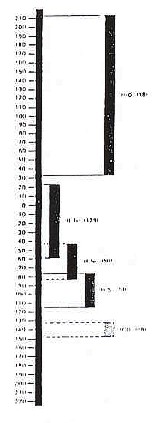 We know that when water is cooled towards the freezing point, it begins to contract. That is, its density increases until that temperature is a plus 4 degrees Celsius or 39 degrees Fahrenheit. At this temperature, which is right above freezing, water reaches its maximum density. As it is cooled further to 0 degrees Celsius, it does a very strange thing - it expands. Water expands about 10% at the point at which it becomes ice. Because of this expansion, ice is lighter than water and it floats. If this expansion did not occur, ice would form on the bottom of lakes first and would kill the life forms that live there. These bonds are relatively weak when compared to other types of bonds. As an example, ordinary table salt (NACL) consists of one atom of sodium bound to one atom of chlorine. When salt is dry, the ions are bound to each other by electrical attraction because sodium has a positive charge of one and chlorine has a negative charge of one. However, when salt is placed in water, these weak bonds are broken and the molecules dissociate into NA+ and CL- ions that have positive and negative charges. 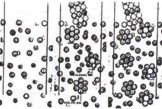 These ions then move around in the water by thermal agitation and cannot recombine into salt because the dielectric constant is such that the mutual attraction of the ions for one another is 1/80th of what it was in the air. The dielectric constant of air is virtually the same as that in a vacuum. The reason water molecules have such a high diapold moment is because the molecules attach to each other in such a way that the charges add up in the same way we get higher voltages by adding batteries in series. The force that enables water molecules to form long chains of complex structure is known as the hydrogen bond. Going back to the basic water principle, we see that positively charged nuclei of the hydrogen atoms are exposed because the electrons are circulating in the election orbits of the oxygen atoms. This produces a powerful positive electro-static force known as the hydrogen bond. If the water molecules are highly structured, the power of the hydrogen bond is increased because of the additive charges. It is the power of the hydrogen bond that enables water to wet substances such as clay, cotton, etc. 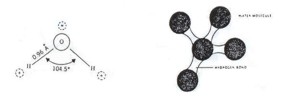 The positive hydrogen and negative oxygen charges bind to electrical charges present on the surface of the substance to which the water comes in contact. Water does not wet paraffin because paraffin is a non-polar molecule and has no electrical sites for the hydrogen bond to act upon. When water begins to freeze, the hydrogen bond begins to form liquid crystal structures. The basic form of these structures is hexagonal. When ice finally forms, it is composed of tetrahedrons that form larger hexagonal structures as those seen in snowflakes. 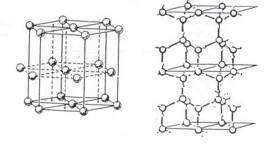 This particular configuration of electrons results in an uneven distribution of the electrical charge in each molecule. This type of molecule is called a "Polar Molecule", as the charges are distributed asymmetrically to form positive and negative poles. These molecules may be likened to an odd shaped battery. The hydrogen and oxygen atoms of simple water molecules are so tightly bound that it takes a great deal of energy to separate or dissociate them in their free-gaseous states. 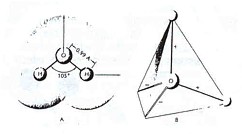 Pure water contains only a tiny, tiny percent of pure hydrogen and hydroxide (ions in free form). The basic water molecule is made of two hydrogen atoms and one oxygen atom. The bond angle between the two hydrogen atom's nucleuses is 104.5 degrees. Some molecules are energized and have an angle of 109.5 degrees. These energized molecules form the basis of the liquid crystal. The electron orbital energy diagram of the water molecule forms a tetrahedron. The most stable liquid crystal is formed from eight of these tetrahedral molecules - called the stella-octangula after the scientist Kepler. This means that pure water is a very poor conductor of electricity since conductivity of liquids is dependent on the existence of free ions. 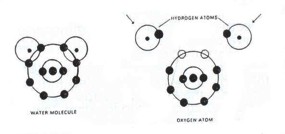 The high polar charge of the water molecule gives it a strong tendency to orient itself in an electrical field. The degree of orientation to an electrical field is called the diapold moment. The size of the diapold moment is dependent on the physical charge separation within the molecule. Water has an unusually large diapold moment. It is this diapold moment of the molecule that gives water some of its characteristics. When an electrical field is applied to pure water, the alignment of molecules tends to neutralize the field. This ability of a substance to neutralize an applied field is called dieletric constant or permitivity of the material. The dielectric constant of a vacuum is said to be 1. The electric-constant of water is 80. This means that two free electric charges of the same value in water will attract or repel each other with 1/80th as much force as they would in a vacuum. It is water's diapold moment that enables it to dissolve substances. These substances are held together by ionic bonds. Ionic-bonded substances are held together by columbic force, which is the force of attraction of one electric charge for another. However, ordinary water is not pure H2O. It has a highly complex structure. It is composed of random molecules of ordinary water that frantically move around by thermal agitation, called Brownian movement. Each molecule has an energy field that is called the electron orbit in the singular water molecule. This orbital forms a tetrahedron with two positive charges and two negative charges on the vertices of the tetrahedron. Within the "sea of chaos" float liquid crystal structures of water molecules that are highly organized. These liquid crystals consist of water molecules that are joined together. These molecules are bound to one another by the hydrogen bond. This was predicted in the classical work by Jay Birdle and R. Fowler and was confirmed by x-ray diffraction studies. 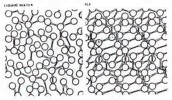 Tetrahedrons can be joined together in a number of ways. These molecular icebergs are made up of clumps of tetrahedrons that are stable only in certain configuration and may be represented by the following: H2ON, where N=1,2,3,4,etc. Whereas, the single water molecule may be represented by H2O. The perfect most stable water crystal cluster has the number N=8. When tetrahedrons are joined together in an "8" configuration, the structure forms a stella-octangula, a figure originally discovered and named by Johannas Kepler. This structure is extremely stable once it is formed. Note: When people fast on pure water for extended periods and cleanse their bodies of the dead cells, materialization and impurities, there is a change in the water structure of the body. This transmutation of the human body takes place through cellular nuclear fusion. The cells are translated into thirteen-sided forms called bucky-balls. 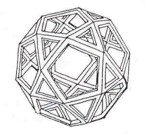 Intermixed with these multiple tetrahedral crystal structures are free water molecules that are not bound by hydrogen bonds. This is the "Sea of Chaos." These molecules partially fill in loose packing regions within the water structure. Water in the living system is highly structured. That is, it is composed of a high percentage of octangular shaped liquid crystals with a very low percentage of chaotic, disorganized molecules. It might be said that water contains liquid crystals of various bonding. This means that water may change structure depending on the effects of internal or external energy fields. There are many different reasons water's structure changes, the biggest factor is movement or stillness. The second most important factor is temperature. We know that all living organisms are composed of highly structured colloids or liquid crystals and that these form the basis of a gigantic living colloidal computer. Colloidal science is still very young and little is known about the high energy of colloidal molecules. Although science has accumulated a wealth of data on colloids, it has not yet developed a general theory about their behavior. Most of the work on colloids has been in the use of colloids in industrial processes. Little is known about colloids in the living system. City, tap, and bottled water, on the other hand, is the inverse of the above composition. It is composed of a large percentage of unstructured molecules that contain a small number of structured liquid crystal. There is a constant energy exchange process between structured tetrahedral molecules and those that are not hydrogen bonded or structured. This exchange is brought about by random thermal motion. When an animal or plant takes in ordinary bulk water, it has to create organized liquid crystals before the water can play a vital role in the living system. This structuring is accomplished by means of high-energy colloids. High energy means that the colloids have a high electrical charge. The living system manufactures these colloids from minerals, albumens, albumoniods and polysaccharides or sugar complexes in the body. These charged colloids act as tiny seeds of energy charge that attract water molecules and form the nucleus of a liquid crystal. Colloids can only act as seed crystal nuclei if they have a high electrical potential. The charge on ordinary colloids is not very stable. 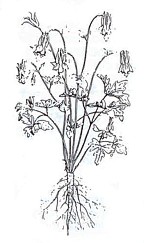 The structure of cellular water is determined by the minute qualities of highly charged colloidal minerals that are held in suspension. To gain a working knowledge of what colloidal chemistry is, consider that living tissues and organs are simply great masses of cells, billions of them. Energy, the very life force of these cells, is obtained from certain minerals and metals, among them are iron, manganese, and copper. There are 32 main minerals with traces of many others in the human body. Colloidal chemistry is the science that converts those elements into particles so minute that they can be utilized by living cells. The body tissues store chemicals found in food and water in the arteries, veins, joints and vital organs. These chemicals can cause the body to lose its ability to use water. It can literally fossilize or mineralize the body's tissues. In a lifetime, the average person consumes enough inorganic minerals to build a full-size stone statue of themselves.  An extremely important function of water is flushing out the toxins, foreign matter and excess body salts. Note: Water softeners remove hard minerals from water but they add salt in their place. The best way of cleansing these impurities from the body is through the use of high-zeta potential, liquid crystal, colloidal water - Vibrant Vital Water®. Pure water in conjunction with high-zeta potential colloids helps to restore the functional integrity of the living system. The effective colloid is explainable in part by electric action. Sick, dead and broken down cells are attracted to the colloids by electrical magnetic force similar to iron filings being attracted to a magnet. The colloids carry those decayed or poisonous substances into the blood stream and they are eliminated. The system meanwhile assimilates what it needs from the colloids. A simple illustration will suggest the immense powers that are being unsealed at a cellular level in the human body: Suppose we have a cube of iron measuring an inch on each end. The total surface would be six square inches. The electrical charge is on the surface. Therefore, the greater the surface area, the greater the charge. If we divide the cube of iron into smaller pieces, we increase the surface areas. By colloidal chemistry, that iron cube can be divided into particles so minute they are invisible. Hence, instead of six square inches of surface emanating electric energy, we have something like eight hundred million square inches. 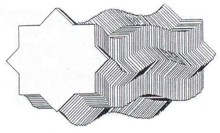 The smallest particle that can be seen by a microscope is one thousand times as large as a molecule. These small particles are known as the twilight zone of matter. In this fine range of subdivided matter, we find the peculiar forms of behavior known as colloidal behavior. As we divide matter into smaller and smaller particles, the surface are of the particles is so large that one quarter of a teaspoon of particles has a surface area greater than that of a football field. Because of this great surface area, colloids generate energy that has powerful effects on physical and chemical reactions. Certain colloids act as powerful catalysts in chemical reactions, often becoming like enzymes in the life process. Because of their small size and large surface energies, the electrical characteristics of colloids become a fundamental importance, as all surfaces are made up of electrical charges. Electrical charges have the well-known property that like charges repel and opposite charges attract. The combination of high surface energies and electrical charges that may accompany colloids account for the action and sensitivity of colloids in the living system. The higher the electrical potential on the surface of the colloid, the more active it is as an energy source. The electrical charge on the surface of a colloid is known as zeta potential. In other words, zeta is the electrical energy charge of water. Zeta potential is increased as it moves, and especially as air mixes between the molecules of water. In nature we see three types of colloids: The first is called an unprotected colloid. This kind of particle is found in ancient, organic mineral sea beds. It is a type of organic or living clay. The surface of the colloid is exposed to agents that may discharge it, leaving colloidal particles that remain discrete by mutual electrical repulsion. This repulsion is known as the coulomb force. Because the surfaces of the unprotected colloids are bare and exposed to their environment, they are easily discharged by contaminant ions of the opposite charge. Clays all have negative charges that are usually very weak. The second colloid is found in the living system and protected from discharge by what is called a lyophilic (which means it likes water) coating such as gelatin, albumen, albuminous or collagen. This coating protects the colloids from discharge because the coating's affinity for water exceeds the mutual attraction of the colloids and ions of opposite charge. The third type of colloid has a protective coating that is composed of a non-ionic neutrally charged polymer. The polymer must have a molecular chain length of 10 to 12 carbon atoms to be effective. These coatings act as electrical insulators and keep the colloids far enough apart to prevent them for discharging and polymerizing or coagulating. When these colloids approach each other on a collision course, osmotic pressure builds up between them. This pressure causes solvent fluid (water) to rush between them, which then drives the particles apart. This type of colloid is also found extensively in the living system and is by far the most stable type of natural colloid. This type of colloid is found in most living fluids and is the type of colloid that is found in the healthy or cloudy colloidal water around the plant (maybe a half-dozen sets are around Earth). It is rarely found outside the living body. 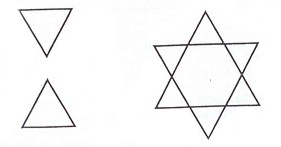 In Hunza water, this organic polymer coating may come from a very fine organic oil or fatty acid that is found in some plants. It may also be found in petrified wood. I mention the Hunza water because the Hunzas are a long-lived people. There is a fourth type of colloid that is not found naturally in the living system but is manufactured industrially and is used as a detergent base. This colloid is protected by an ionic surfactant such as sulfated castor oil. The protective coating is an ionic detergent. Such detergent molecules are polarized, having at one end of the structure a lyophilic molecule and at the other end a lipophilic molecule - it likes oil rather than water. These are attached to the outside of the colloid in such a way that the lipophilic molecule is facing the colloid with the lyophilic molecule facing into the bulk water in which the colloids are dispersed. That is why it acts like a detergent or soap and removes soil, stains, etc. Since colloids are in a high-energy state, they are unstable complexes that undergo continuous transformations that can be induced by light, heat, electrical fields, electromagnetic forces, solar flares, the moon and other forms of nature, as well as thought and action. If the colloidal system loses its electrical charge, the system loses its colloidal behavior, and it is dead. This applies to both organic and inorganic colloidal systems. In the early 1930's Dr. Henri Coanda (a Romanian scientist who is known as the father of fluid dynamics) made an arduous journey around the world looking for water that contained what he believed to be the highest colloidal potential waters produced naturally by the earth. Some of the places Dr. Coanda traveled to were an area known as Georgia (a high mountain in Russia), the high mountain region of Mongolia, the Vilcabamba mountain valley in Ecuador, and a valley in Peru.  Dr. Coanda also observed a phenomenon that is now called the Coanda effect - the fluid flow that enables airplanes to fly. Simply stated, when a fluid flows over a surface, it tends to cling to that surface. If the surface curves, the fluid will follow the curve and will also entrain or capture surrounding fluid with it. This discovery led to the development of fluid computers, fluid amplifiers, and a variety of other inventions that make life easier. One of the Coanda effect inventions is a device that acts as a fluid amplifier. If a curve and the fluid velocity are in resonance with each other, this device will increase the volume and/or acceleration of the fluid. This device (the Coanda nozzle) produces such a rapid change in fluid flow and pressure that it reduces the temperature of the air flowing over the surface. This effect is so great that if the water is injected into the airflow, it produces ice crystals and perfect snow flakes. In the 1930's he used the device to make the first artificial snow for the ski slopes in France. 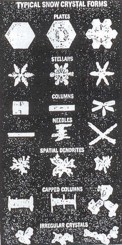 Dr. Coanda was able to test the water in the places that he visited by turning samples of water into snowflakes using his snowmaking fluid amplifier. He reported that the snowflakes are living forms with a circulator system composed of tiny tubes in the center of the snowflake structure. These tubes are analogous to the circulatory system in animals and plants. They are tiny veins that circulate water that is not yet frozen. This water is anomalous water. That is, the veinist liquid crystal of the snowflake does not freeze at zero degrees Celsius like ordinary water - it freezes much more slowly. When the water in these veins does eventually freeze, the snowflake has reached the end of its life - it is now dead rather than a living entity. By measuring the life span of a living snowflake, Dr. Coanda was able to establish a direct relationship to human lifespan in areas where water was tested. He said this anomalous water was the key to long life spans of different groups of people throughout the world. He explained that the secret to long life, as far as he is able to determine in over sixty years of water study, is somehow related to the molecular structure of the water that is being consumed. Water exhibits a force known as surface tension. Surface tension is the force that causes water to stick to itself or pull itself together. It is surface tension that causes raindrops to assume a spherical shape - the sphere being the only shape that requires the least amount of energy to maintain itself. This is because, of all shapes, the sphere has the least amount of surface area per given volume. This cohesion of water generates a tension on its surface. Surface tension can be measured and is the amount of force required to beak or tear apart the surface of the water. When this tension is unbroken, water can support objects that are heavier than itself. This is why insects like a water-skeeter can turn on the surface of water as if the water were solid. We can float a needle on the surface of water as long as we don't beak the surface tension.  Not only is water attracted to itself, it is attracted to solid substances. The degree of its adhesion depends on the object to which it comes in contact. This process of adhesion is called wetting. The ability of pure water to wet a substance is dependent on the electrical charge of the water molecule and the nature of the substance. Some substances, such as wax, cannot be wet by water. Substances, such as cotton, clay and rocks are easily wet. Nearly all inorganic and organic substances found in nature can be wet by water. All substances have a known wetting index that is representative of the surface tension required to wet that substance. The thermodynamics of wetting is determined by the value of the contact-angle between the solid particle and the water (contact-angle is a function of surface tension). Each solid substance has its own critical surface tension which is required for wetting. Any liquid with a surface tension below the critical value of the solid will wet the solid. The tensiometer is a device that measures the surface tension of a fluid by means of a calibrated platinum ring. A sample of water is placed in contact with the ring to measure the cohesive force of the water. The water sample wets the ring and adheres to the ring's surface. When the switch is thrown, an electric motor begins to rotate a calibrated torsion wire that gradually increases tension on the ring creating a lifting force that at some point will lift the ring from the surface of the water. As tension is increased on the torsion wire, the water surface begins to distort forming a water volcano as the ring is lifted higher and higher. At a certain point, the water surface will rupture, and the wire ring will break free from the surface. When the surface breaks, the motor will automatically turn off and the force needed to lift the ring from the surface can be read on a calibrated vernier dial. This force is calibrated in dynes per centimeter (a unit of force). Ordinary water at room temperature has a surface tension of about 73 dynes. If we add energy to the water sample by heating it, the cohesive force (tension) is decreased. As room temperature heat water is heated toward the boiling point, the surface tension will drop from 73 dynes to 60 dynes. 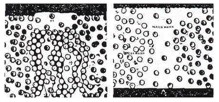 One of the reasons that hot water is so effective in making coffee or tea and in cleaning dirt from clothes is because of this reduced surface tension. The increased energy of hot water and the reduced surface tension means that water will wet these substances easier. It also means that water will penetrate through small openings with less force. That is why hot water will mix with substances that will not mix easily with cold water. Scientific studies in anomalous water behavior where waters were measured in all kinds of physical parameters have shown that the surface tension was an excellent measure of free energy contained in the water molecule. If we lower the surface tension of water while maintaining the temperature at a fixed point, we can calculate the energy that would create the same surface tension by means of adding heat in the form of calories. If we lower the surface tension of room temperature water from 73 dynes to 60 dynes, we have reduced the surface tension to the same level as that of boiling water. At room temperature, that water will have the same wetting power as boiling water, and it will extract coffee and tea flavoring in the same way as boiling water. In the food processing industry, it is well known that certain food substances cannot be wet by ordinary water. For instance, the critical surface tension for wetting starch at 20 degrees Centigrade is 39 dynes, the value of cellulose is 45, while skimmed milk power can be wetted by water at 73 dynes per centimeter. We can see that surface tension becomes an extremely important factor in the absorption and assimilation of food by a living system. This is the reason it is not good to drink ordinary water when we eat. Our digestive juices have relatively low surface tension and can readily wet out food. When we drink ordinary water, it dilutes the digestive juices and prevents adequate wetting of food particles. Water with a surface tension of 60 or less would be great to have with meals. Water should be taken 30 minutes before a meal to ensure that water is not taken from other organs to produce the digestive juices for the stomach. Note that the surface tension of high colloidal or cloudy mineral water usually sits at around 68 dynes per centimeter. The surface tension of human blood serum is only 45 dynes, much lower than that of boiling water. This is an anomaly to science. It appears that science, religion and even philosophy are complete in their agreement on probably only one subject - blood. All of them agree that the quality and power of life is dependent on blood. The ancient Chinese named the circulatory system The Dragon. There were special, secret exercises dealing with physical movement and sexuality that were performed in order to give life to the Dragon to make it a dragon force of life instead of a dragon of death. 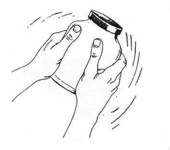 We know that water makes up 83% of our blood. The other 7% of blood is made up entirely of colloidal particles. The quality of that water in our blood is what gives us our zeta potential - our energy, our charge, our consciousness, our life force - this is the key to good health and longevity. Full-Spectrum Living Water is the elixir of the ageless. There is an ancient legend of the Fountain of Youth. As with most legends and myths, it can be seen as a metaphor. My understanding of this legend is: Your body is the fountain. About 200 years ago, the body was referred to as being living stone - "Know ye not that ye are as living stones?" asked Peter the Apostle. The fountain of youth is literally the kind of water that your body is consuming and carrying around in it.  The key to greater consciousness and long life is contained in the structure of water and the hygienic culture of an individual's own body - their fountain. Once again, your body is the fountain of living stone. Water creates youth, life and vitality as it flows through the body. In tests on blood serum, urine, and vegetable and fruit juices, the surface tension for fresh juice is very low, ranging from 65 for the average blood serum to 30 for fresh carrot juice. However, the colloids of living fluids have a short life upon removal from the living cell, and that is why they must be consumed quickly. The fresher the juice, the lower the surface tension. The juice with the lowest recorded surface tension is carrot juice. It has been taught for centuries that carrot juice has the greatest healing qualities of all juices. Your body receives the zeta potential of water, fruit juices, and foods when the electrical energy of that substance comes in contact with your teeth - exposing the skeletal system to the air and your food. The calcium, collspygen mixture of bone is perfect for the assimilation of electrical energy throughout the body at the speed of light.  Fresh vegetable and fruit juices can have a surface tension as low as 30 but, when they are heated, they immediately go to 73. When they are put in the refrigerator for just 15-20 minutes, most of them go back to 68. When they reach a surface tension of 73, juices are considered electrically dead. It is interesting to note that all food processing and cooking tends to destroy the zeta potential of food. Since colloid pioneers such as Thomas Riddic believe zeta potential to be a basic law of nature, it becomes obvious that zeta potential is basic to life itself. In view of this, the ideal diet would be one in which fresh juice is an abundant part. Juice of raw fruits and vegetables contain an abundance of high zeta potential colloids and anionic-poly-electrolytes - exactly what generates and enhances life. Enzymes are high zeta potential colloids. Heat destroys enzymes. Studies have show that the highly charged colloids in living cellular fluid are probably as important, if not more so, than enzymes, vitamins and nutrients that people talk about in the health and medical industries. In fact, these things are meaningless once the water in which they are suspended is removed. All that is left are the cellulose fiber, minerals and enzymes that have no life force - they are de-activated. When Full-Spectrum Living Water is reintroduced, they are resurrected. Where do colloids get their electrical charge? They get it from cosmic energy, sunlight or light from other star systems throughout our galaxy that create electromagnetic current that permeates the water and all things here on this planet. There are different electrical properties that are sent through radiation - the sea of energy. The ancients called the different electrical energies that reached our earth the music of the spheres. They assigned a note to each type of electrical energy of light that could be seen as colors through a prism. Each color affects water in a different way. The full range of sunlight does an interesting thing to water - it lowers the dyne measurement (surface tension) of the water and enlivens (electrifies) the water that it comes in contact with. 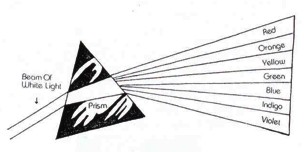 The electrical charge on colloids or minerals held in suspension in water has been measured at around 40 millivolts or MV (.040 volts). This may not sound like much, but when you add a million of these particles to a glass of water, the total amount of electrical charge would be about .040 times 1,000,000 (40,000 volts). That is a horrendous amount of electrical energy contained in a glass of water. As all of the charges are the same polarity, they are not additive - that is why we don't feel it released. However, the greater the number of charges, the greater the effect is on the water's structure, as each charge acts as a nucleus for the formation of liquid crystals that change the surface tension of water. It also increases the zeta potential of that water. The blood is a high zeta potential biological system, and our body is composed entirely of colloids. That is what makes up our flesh and organs - the entire matter formation of our body. In fact, the human body is a nearly perfect colloidal computer - every cell is a colloid. These colloids are arranged in patterns to create specific functions. Information in an analog computer is transmitted by voltage levels (current intensity). Recent discoveries by Dr. Fritz Albert Popp of Germany indicate that the DNA molecule transmits its blueprint information to other cells by means of a potent burst of coherent ultraviolet laser light. The optical pathway that this information is transmitted through consists of highly structured cellular water formations. These act as light pipes for the signals, reflectors and tunnels. Dr. Popp indicates that water molecules are structured by the colloidal minerals that are present. (This was talked about in Fusion Magazine, Sept-Oct 1985.) 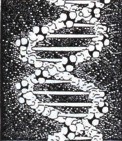 When an area of the body is injured, cells create a negative electric charge in the vicinity of the injury. These negative charges accelerate the healing process by attracting nutrient ions to the area. The most highly structure water in the living system is in the brain and nervous system. The water in the brain is so highly structured it has also been called ice at 98.6 degree F (37 degrees C). This highly structured water is also found in the cerebral spinal fluid - this fluid not only bathes the brain but extends down the entire length of the spine and throughout every nerve fiber from the top of your head to the tip of your toes. The coccygeal gland at the base of the spine is actually a center of ice - it is the tip of the iceberg (brain) at the end of your spinal column. The distance covered by this liquid crystal is over 25,000 miles of nerve tissue. The human body is literally a gigantic liquid crystal - a bio-computer. Note: If the convolutions of brain mass were laid out, would literally match the circumference of the Earth. As above, so below. The structure of biological liquid crystal water in the brain and nerves melts at about 106 degrees F (41 degrees C) - this is when it looses its structure. This is interesting, as this is also the body's core temperature at which people die. As liquid crystals are heated, the caloric energy causes the molecules to vibrate faster and faster. At a given temperature in every crystal system, a point is reached at which the intensity of vibration is so great that the energy bonds between those structures torn apart - sometimes called the curry point. Every crystalline system has one a curry point. Since liquid crystals are weakly bonded, their curry points are quite low. The balance of electrolytes in the brain and nervous system is critical.  The body's blood/brain barrier is special defense mechanism that prevents foreign substances from entering the brain. Tumors in the brain are the body's last resort to try and contain substances that do not belong in the water formations of the brain. These substances are probably getting there because of a high, intense dose of ions, such as aluminum, lead, etc. It has been found that various types of stress in the form of ionic imbalances, certain types of electrical magnetic waves, hormone imbalances, toxins, and free radicals in the form of positive ions tend to destroy the negative charges on living colloids of the blood. When the negative potentials on these colloids are reduced, the cells begin to agglomerate (gel) and to coagulate in different degrees, blood viscosity increases, cells loose their discreetness and cannot transport nutrients into cells and remove toxins from the body. When these conditions persist over a long period of time, the various body systems begin to function poorly, and the body dies by degrees, inch by inch. Small body tubes from capillaries to intestines, get plugged, inflamed, balloon and explode. Disease is really a problem with tubes and the transport of water and its ingredients. Remember, colloid minerals are insoluble particles with a negative electric polarity charge, and they are held in suspension in the water. These particles are so tiny that the normal thermal agitation of the water (the temperature) keeps them from settling. The electric charges repel each other so that an electrical field pattern is created in the water in which they are suspended. As living colloids have a negative electric charge, any substance that has a positive charge will destroy the charge on the colloids and cause them to agglomerate or flocculate. When this happens they fall out of suspension. After years of scientific research, it has been found that negatively charged colloids in cloudy water act as small nuclei for liquid crystals. These highly charged hydrated particles structure water much the same as fluids are structured by living plant or animal systems. They automatically lower surface tension and increase electrical potential. Therefore, in the body, they can wet the cells more easily and stop dehydration, which is the aging process. What we know as disease is simply the body's response to the degeneration of its efficiency by these things that destroy its electrical charge - its ability to use water. The waters begin to pool, to slow down, to stagnate and die. As long as colloids retain their charge, they are alive. A positive ion is called a cation because it is attracted to the cathode (negative electrode). If we put electrodes in a glass of water and connect a 12-volt battery to these electrodes, the cations (positive ions) will be attracted to the negative polar cathode and the anions (negative ions) will be attracted to the anode (positive electrode). Since the blood is a delicately balanced colloidal system with a negative zeta potential, the cationic mineral salts in tap water tend to cause blood clumping (aggregation) in the people who drink it. No wonder cardiovascular disease is the #1 killer in the country, and no wonder that senile dementias are coming upon the people. Note: Eating high fat content foods clumps and slows the blood, whereas a glass of liquid crystal colloidal water and/or fruit juice gives blood its integrity and separateness - its discreetness in order to act and be efficient as a carrier of nutrients and oxygen. Water treatment is a big factor in human disorders. Aluminum ions are used in water purification plants to coagulate the organic pollutants (such as human waste) so that it can be filtered out, and to keep city pipes from corroding. Most purification systems add too much aluminum to the water and, as a result, an excess of ions build up in the tap water. These minerals are added without any knowledge of their potential danger to the living system. 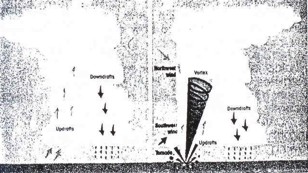 Magnetically treated water (water that has passed through magnets) has been used since the turn of the century for corrosion control in metal pipes; and yet no one, no scientist has ever satisfactorily explained why that phenomena occurs. Note: Most of the tap water in our cities is literally too thin to plow and too thick to drink. Municipalities treat sewage water by means of cationic electrolytes in an effort to precipitate and remove organic waste so the water can be recycled as drinking water. Today's tap water is frequently yesterday's toilet water. Chemicals used to treat wastewater are all positively charged electrolytes that are potentially destructive to colloidal balance when ingested. After organic colloids are removed from water, water is then treated with other cationic electrolytes that are used solely to slow down the erosion of city pipes. Drinking tap water is a slow form of suicide. And we haven't even considered the thousands of carcinogens or parasites (such as the cryptosporidium parasite that received some news coverage in recent years) that have been found in tap water. Studies have shown that humans are creating super viruses and super parasites in our waters by polluting them with toxic and unbiodegradable chemicals causing toxic chemical cocktails. All flowing water, though it may appear to be uniform, is divided into extensive inner surfaces. In flowing streams, millions of vortexes form when water breaks past stones, sticks and other obstructions. These vortex patterns act as powerful resident structures, as well as energizers and electrifiers for water and colloids. Close observation reveals that the vortex has a rhythm of its own. It extends and contracts in a rhythmic pulsation. The vortex is actually composed of a series of discrete flowing surfaces, all bound together as if by an invisible hand. These flowing interfaces move at different speeds, slow on the outside, fast on the inside. The velocity (movement) of water in a vortex multiplied by the radius from the center is a constant. This means that the velocity at the center of the vortex is theoretically infinite. As the forces in a perfect vortex approach infinity, the hydrogen bonds in the water molecules cannot sustain the pressure difference and begin to dissociate, releasing powerful forces. Science has tested this by creating vortexes (whirlpools) with liquid and measuring its surface potential. This vortex (tigential amplification as science calls it) takes place every day in the human body. The human body is actually a vortex amplifier.  An experiment that can be tried at home to see the inability of the body to use oxygen in water that has been distilled or sitting too long is to put fish in it. The fish will soon die. Then take the same water and simply pour it back and forth between two containers about a dozen times. Put another fish in the water, and the fish will thrive. Movement of water through air generates zeta or electrical energy and breaks free the hydrogen and the use of oxygen in its fluid form. It is interesting that the potential, or electrical force of your body, or amplification of the water's potential in zeta and colloidal form is determined by what we call the health or purity of the body (or the integrity of the foundation). The vortex flows are one of the secrets of the great sensitivity of water to the forces of the universe. Water is affected by magnetic, electric and vibrational influences, as well as light, sound and pressure, etc. However, all of these sensitivities are fleeting. The only time water is really sensitive to external forces like these is when it is flowing or when it has been moving and the air has circulated through it. When water flows, millions of molecular interfaces open up along interior flow lines. These interfaces are stretched like rubber bands and are so sensitive that science is starting to show that they can be impressed by the subtle energies of planetary relationships. It appears that different star systems and configurations of alignments of stars in our solar system and galaxy have an effect upon the structure of water. In one experiment, Dr. Kolisko was able to show repeatable changes in crystallization of various mineral salts that are affected by planetary transits. These energies are captured in water that is undergoing turbulent or vorticle flow. The instant the flow is ceased, the energy of that moment is retained in the water as a reflection, as a mirror, as an image, as an icon, until it is agitated or moved again, at which point a whole new set of energies are literally captured. It is a fact that some people are filled with a lot of energy. They move with great alacrity and have a lot of personal magnetism. In view of my understandings about the nature of water, this makes me wonder if it isn't that same magnetic energy acting upon the water that gives these people their free, fluid form and energy. This is manifested more acutely in children. Some children are docile and seem lackless, listless and without much energy. Yet others are filled with energy, high intelligence, motion and fluidity. I'm sure this has something to do with water, light and the thoughts of each of those individuals. It has been shown that thought is electrical. Thought and its electrical energy actually take place on the water that makes up approximately 93% of the human brain. This electrical force changes the surface structure of the water, and we feel that as motive energy (emotions). In other words, our emotions are a reflection of the structure of water and the icons or images it holds in the body and in the brain. Another interesting note is that one of the oldest words in existence is the word memory. Mem is a letter of the Hebrew alphabet, and means water. Ory is a Hebrew word for light. Memory then is the reflection of light upon water and the images held upon the surface of the water's structure in the brain or B-rain. In Hebrew, the letter "B" is called "beth" which means house. Rain means pure water, so the brain is the house of pure water. 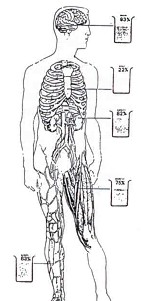 Understanding Water's Characteristics - Part II 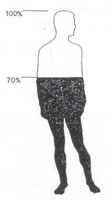 It has been said: "It appears that the body is an invention of water , so it could get up and walk around!" Next to oxygen, water is the substance we need most and give the least thought to. Plants live on food they make themselves from water, sunlight, carbon dioxide and inorganic minerals. Animals and man are subject to the organic laws of nature. The human brain is composed of approximately 93% water and needs to be rehydrated or refreshed every 24 hours. Approximately 83% of blood is composed of water that also needs to be refreshed to enliven and vitalize it. The body is able to create a portion of its own distilled water by oxidation of sugars, fats and protein. The body's temperature is controlled through water dynamics. Approximately 15% to 70% of the total water in our body is stored in muscles, another 10% to 15% in the skin. When we are born, we are about 98% water. When we reach adulthood we are about 70% water. As we age, our bodies harden as we lose the ability to store and use water. Aging is literally a slow process of dehydration. The average adult body contains approximately 45 quarts of water. Water covers ¾ of the earth's surface and makes up approximately ¾ of our body weight. Our muscles are composed of ¾ water. The liver is 69% water, and our bones are 22% water. In the same way that water is not evenly distributed in the body, the water of earth is not evenly distributed over its surface. Most of the earth's water is held in ocean basins in a form that is unsuitable for drinking or the irrigation of crops. Water is suitable for plant and animal use when nature distills it into a pure, mineral-free form at which time it falls as rain in varying amounts from place to place and from time to time. The most powerful water is water that has high colloidal minerals held in suspension brought to you by the Earth herself, not from someone's make-a-buck laboratory/business.  In the same way that water evaporates from the oceans only to fall back to the land, our body's water evaporates and flows from the surface of the body - it is breathed out with every breath - it must be continuously replaced in order for use to remain alive. We are conceived in water, we swim, shower or bathe to cool off or to warm up, to relieve aches and pains. The sounds of water soothe and heal us. Water gave you life; it can maintain and enrich life, but you must drink it. No one can force you. Just as a horse can be led to water, but no one can make it drink. A glass of cool water is like taking an internal shower!  A Water Fallacy: "I know when I'm thirsty!" Most people in today's world suffer from chronic dehydration causing them to feel the pains of disease and discomfort. As a society we have lost our ability to distinguish thirst from dehydration. If our lips are dry, we put on lip balm. If our tongue sticks to the roof of our mouth, we suck on a mint or chew some gum. When we feel thirsty, we drink a soda - most often with a drug like phosphorus, caffeine, saccharine or aspartame. In our dehydrated state, we feel stress. The chemicals in our drinks cause the body to produce endorphins in the brain so we feel a "high" and become addicted. As with any drug, more and more is needed to get the same "kick", and people become addicted to prepared beverages - soda, tea, coffee, beer, or whatever. One of the greatest proponents of human illness is water mixed with other substances, especially caffeine, which acts as a dehydrating agent that tells your kidneys to flush out more water. Caffeine directly affects the renal tubes, telling them to get rid of water. Caffeine is a potent dehydrating, water rejecting substance. Although there is water in teas, the chemical properties will not allow the body to soak up and use the water. It flushes past the cells too quick! Cells are as sponges and, under the squeeze of gravity, can dehydrate very quickly. Water moves out of cells more quickly than it moves into them because of the nature of the process of absorption from portals.) Of course, most people do not want to stop drinking prepared drinks whether it is tea or alcohol and everything in between. To switch to drinking water is difficult. New behaviors are painful. So you should try to drink as much water as other fluids. If you can't stomach water, drink it medicinally until you get used to it - small cups, sip a little all day long. Using a straw to drink water may help. Our body needs from 12 to 20 glasses of water a day. The color and odor of your urine is the best water needs indicator. The body concentrates urine in order to conserve water. The more concentrated the urine the greater the body's dehydration. In its natural, healthy, balanced sate, urine is clear as water and odor free - not dark colored or having a stench. In today's food and beverage society, thirst is not a valid indication of water need. Instead, go by stomach pains, depression, high blood pressure, high cholesterol, liver and kidney damage, exhaustion, as well as dry lips or mouth and bodily pains of every kind. Increased water naturally means increased volumes of urine production. This can cause a loss of water-soluble vitamins from the body, which most bodies need. If you experience discomfort in the rehydration process, you may want to increase your intake of sea salt (water soluble) and fresh fruits and juices to avoid muscle cramps. Sea salt will help you retain the water in process of rehydration. Not enough salt in the body can cause dehydration, as well as prevent you from rehydration. In the beginning, you'll go to the bathroom to relieve the excess water. But in just four to six weeks, your holding organs expand to handle the increased supply. It is a small price to pay for the health, life and joy received. Water allows cells to do what they are designed to do - generate life, health and joy throughout your body. Water is not so much a treatment as it should be a life style. Water Can Help Prevent Senile Dementia The brain draws most of its energy from water. Neurotransmission relies on water and fresh water flow. What occurs along the nerves is an exchange of charged mineral colloidals called cateoris. Cateoris exchange gets its energy from water. Water also affects nerve transmission in that along the entire length of nerves there exists waterways - tiny micro streams of water that float materials ("nutrients") along biological structures called micro-tubules. These small rivers of water move molecules manufactured in the brain to their destinations in the nerve endings throughout the body. The lack or shortage of water slows things and eventually brings it all to a halt. Dehydration shrinks, impairs and eventually kills cells. Water shapes cells, holds them together and allows them to work, flowingly and freely. Dehydration increases the thickness and stickiness of the cell fluids - clogging them up. In the brain this creates memory loss called Senile Dementia. Water at certain depths of the body tissue becomes H3O or what is called a sheet of hydronium of lower viscosity (less thickness). In a dehydrated state, things are less efficient, slow-moving and backed-up.  Water Can Relieve Chronic Fatigue Syndrome Water generates energy through hydrolysis which means the splitting of water into its two components - hydrogen and oxygen. Whenever this occurs, energy is released. The energy generated by water helps produce what science has named ATP, a component that stores body energy. Just as there is solar energy in the body, there is hydro-electric energy. (*See report on photo-aqua-bio synthesis & bioluminescence.) Remember the body is about 70% water and the brain is around 93% water - water that needs to be replenished daily, made fresh and clean to unencumber the body. In this way, water has cured chronic fatigue syndrome. Water calms and helps the emotions and shattered nerves. Water increases physical, mental, and emotional energy. 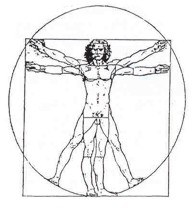 What if over 90% of all illnesses were caused by dehydration, wrong diet and lack of exercise (i.e., plugged tubes) and were curable by rehydration, correct diet and exercise? Would you change? Most would rather avoid the pain and discomfort of change than gain the pleasure of high health and achievement. Only when the pain of bodily crisis strikes them are they willing to commit to change - often too late. 99% of all doctors are totally ignorant bout water and the benefits water administers to the human body. We see how plants in dry soil respond to water, but we cannot relate it to ourselves. An understanding of water could change, impact, affect and revolutionize the practice of medicine all over the world. Medical understandings and accepted practices (which are for the most part to sell you a pill) never address the problem of dehydration. Dehydration is not testable through blood tests or other procedures in the standards of today's labs. Dehydration renders a lot of tests and methodologies in medicine obsolete. In modern medicine, it is believed that it is the solids in the body that are important - the proteins, minerals and vitamins. To them, water is incidental. That water is merely a solvent, a packing material, a fluid for transport of what is really important. Wrong again. Doctors of today basically ignore water cures or even a discussion of water. Our society has created a situation that makes it very easy for doctors to reduce themselves to a chattel of the pharmaceutical companies. They become professional sales people for pills and procedures - legalized pushers for the legalized drug lords. Some do manage to keep their integrity and focus on truly helping the sick (generally, that is all they can do because in medical terms there are so many incurable diseases). (See Mendelssohn's books Dairy of A Medical Heretic and Male-Practice. I care about the health and well being of all of "Creator's" creations. My passion is to understand as much about water as possible, share this information with others, hopefully creating a ripple effect across the planet. Earth gave you this water, use it wisely. Understanding Water's Characteristics - Part III 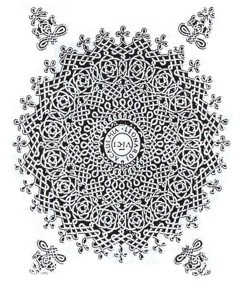 Water is so commonplace that we tend to take it for granted. In the past, fetching water was one of mankind's primary tasks. It involved great effort and labor. Man believed that water was inhabited by divine beings whom they could only approach with great reverence. Like Fire, Air and Earth, Water was one of the great gods or divine beings that made up the whole of our world.  In ancient medicine, water was held as sacred. When someone offered you a glass of water without your asking for it, it was considered a high gift of God and was sipped as a holy sacrament. It was called life, the wine of God. Water, along with fresh air, was the orthodox medical science of ancient Greece, Rome and Egypt. In all ancient religions, pure water was used for the purification of the body and was referred to as the holiest of angels because it healed the body more quickly than any other thing. The Greeks reached a standard of clear thinking and physical perfection that has never been surpassed to knowledge of modern historians. The quality of their drinking water was the most important factor to their way of life. Almost every civilization was born and cradled on the banks of the earth's great rivers, waterways and springs. It's possible that your body is a microcosm of the Earth. In other words, there are waters in you that are stagnant, waters that are flowing, waters that are sick, waters that are alive and energized, waters that are held in gaseous form, waters that are like ice. 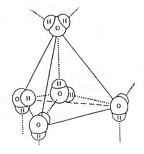 As we change our body into a more pure physical body, the water in our body changes its molecular structure. The water in a pure body is not the same water as that in the body that is sickly. With the beginning of the technological age of science, all but a few people seem to have lost the perception of the true nature of water, what it is, and what it actually does. Water is the bearer of the formative living process (Note: Refer to Section 1, Page 13 where it talks about energies being suspended in water as a reflection, a remembrance, a recall, a memory of intelligence.) 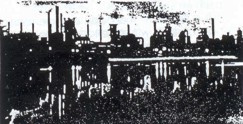 The fluid element is the universal element - not yet solid, but remaining open to outside influences, the unformed, the indeterminate element, ready to receive definite form - known as the "Sensitive Chaos" the "Navalis Fragmente". As man learned to use water technically and became more familiar with its nature, the more his knowledge of the element of water increased, and his curiosity of essence faded. Man no longer looked at the divinity and the geometrical structure of water, but only at its value in commerce and in community. 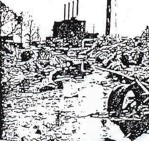 Today man has polluted nearly the entire water element of the Earth - the very source and the mother of life. The destruction of the elements of Earth is fed by a way of thinking that perceives personal profit above the vital coherence of all things in nature. Humanity has not only lost touch with the divine nature of water, but is in danger of losing its very physical substance. In the not so distant future, pure water will be more valuable than oil or gasoline. "Drink In Good Health!" If you have any further questions or comments, or would like to share with us your personal results after using Vibrant Vital Water®, please email us! Vibrant Vital Water® Send us an Email: vibrantvitalwater@gmail.com |
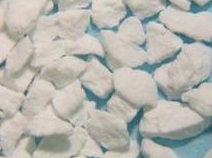 Fluoride is strongly attracted to activated alumina (corundum/aluminum oxide) which has a large surface area with a huge array of tunnel-like pores. For this reason, activated alumina is the most commonly used fluoride removal media today. When used properly, it can remove up to 98% of the fluoride in water while also removing arsenic. The challenges with activated alumina are many. First of all, since the process works by ion exchange, the water must remain in contact with the media for an extended period of time—long enough for the fluoride to be adsorbed by the media. When the flow rate is faster than ¼ gallon/minute, there is not enough time to adsorb all the fluoride in the water. Another difficulty with activated alumina is that the media becomes saturated with fluoride. Depending on the amount of media in the system (how large the filter is) and on the amount of fluoride in the water, systems using activated alumina either need to be recharged or replaced often. The last difficulty with activated alumina is that aluminum is released into the treated water. This effectively trades one problem for another. Some systems address this; others do not.
Fluoride is strongly attracted to activated alumina (corundum/aluminum oxide) which has a large surface area with a huge array of tunnel-like pores. For this reason, activated alumina is the most commonly used fluoride removal media today. When used properly, it can remove up to 98% of the fluoride in water while also removing arsenic. The challenges with activated alumina are many. First of all, since the process works by ion exchange, the water must remain in contact with the media for an extended period of time—long enough for the fluoride to be adsorbed by the media. When the flow rate is faster than ¼ gallon/minute, there is not enough time to adsorb all the fluoride in the water. Another difficulty with activated alumina is that the media becomes saturated with fluoride. Depending on the amount of media in the system (how large the filter is) and on the amount of fluoride in the water, systems using activated alumina either need to be recharged or replaced often. The last difficulty with activated alumina is that aluminum is released into the treated water. This effectively trades one problem for another. Some systems address this; others do not.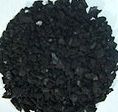 Bone-Char (BC) Carbon has been used for centuries to remove naturally-occurring fluoride from water. It works similar to the way bones in the human body attract fluoride. Bone contains a porous matrix that is rich in surface ions. These can be readily replaced by fluoride and by some of the other contaminants that arrive along with fluoride (heavy metals). Bone char effectively removes a number of contaminants.
Bone-Char (BC) Carbon has been used for centuries to remove naturally-occurring fluoride from water. It works similar to the way bones in the human body attract fluoride. Bone contains a porous matrix that is rich in surface ions. These can be readily replaced by fluoride and by some of the other contaminants that arrive along with fluoride (heavy metals). Bone char effectively removes a number of contaminants.